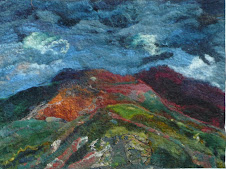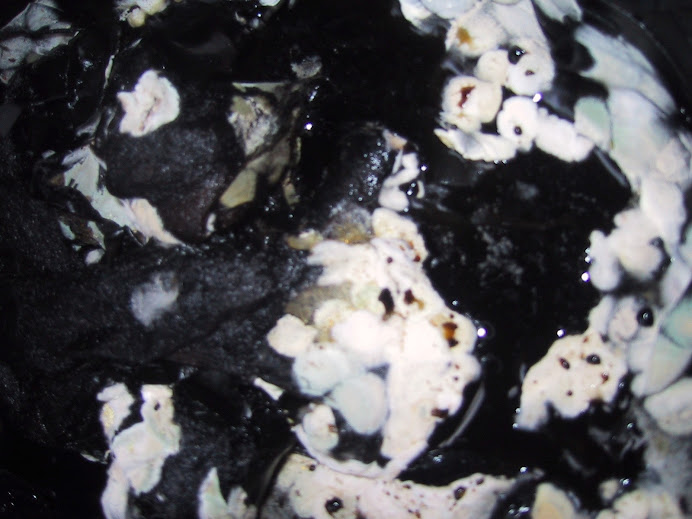
Hi first of all a warm thanks to all those who pop in and out of my blog with comments, advice and support it's great- thanks.
Although I have been a bit slow updating the blog I have been busy. A while back I received a sample of weld from Ian Howard who is growing it and selling it from his farm in Norfolk. You can find out more about Ian at his website http://www.woad-inc.co.uk/. As you can tell from his web address he also grows and sells woad!
On the 5th of February I put the whole lot ( 300g) into a slow cooker covered with water and left for two days on a low heat. I strained dye plants , put the liquor into a large shallow dyepot, entered back the chopped plant material in a muslin bag and entered in 200g of premordanted merino tops ( 8%alum 7% cream of tartar). I left these on a gentle heat ( about 65 degrees C-70) These are the first two samples on the piece of card the first one on the left hand side the second with ammonia added. The third is the exhaust and the last is weld with one dip of indigo using my standard method. This is one of the reason why I love weld I love the colour with indigo. The dye bath seemd almost exhausted and I expected a pale yellow so what happened next starts to get interesting! I left the dyebath for two days without heat then put in in another 100g of merino tops & silk cap (not shown) and left on a low heat for about a week and yes all the time too! Poor nervous husband says to me "have you left anything on in the studio?"-(no doubt with visions of it going up in flames) and I say "well just one or two on very low". Gradually the colour began to appear almost like a bright yellow stain on the fibres to start off with then deepening and the whole top went that deep yellow. That is the ball of merino tops on the LHS. above the card. The 100g ball on the RHS was the next to be entered here as soon as I entered it it went a buttery yellow.
Now what is happening here? It is not fermentation that is givng this bright yellow -brighter incidentally than the first sample with ammonia- as the temperature has been 65degrees to 70 degrees C centigrade too hot for fermentation. Is it the second dye weld contains -apigenin- appearing? Or a slow breakdown of plant structure releasing more dye. There is still dye appearing too as today I in another 100g which is slowly going yellow.
Weld contains luteolin and apigenin 1 although apigenin is sometimes in very small quantities .Both are these are flavones which stand out amongst flavonoids as having better lightfastness than for example the






















No comments:
Post a Comment